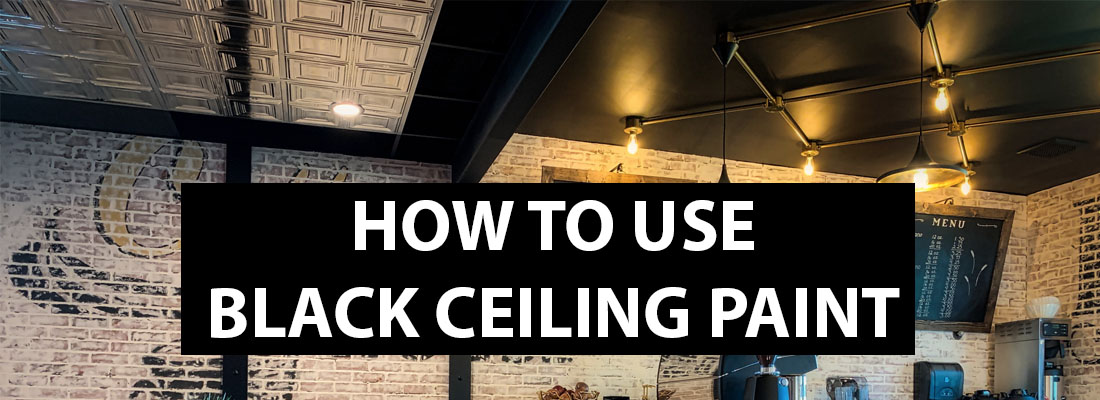In this guide, we’ll teach you how to use black paint for walls. When it comes to painting your walls black, there are a few things you need to keep in mind. First of all, black is a very strong color and can easily overwhelm a space if you don’t use it correctly. It’s important to find the right shade of black that will work well with the other colors in your room. You also need to make sure that your black paint is properly sealed so that it doesn’t chip or fade over time.
If you’re interested in a dramatic look, painting your walls black is a great option. Below we’ll walk you through how to use black paint for walls. If you live in the Boise, Idaho area, this is a great option for your home’s interior painting needs.
1. The different shades of black paint available
There are a surprisingly wide range of shades of black paint available for you. Whether you’re looking for a deep, rich black or a light, airy black, there’s sure to be a shade that’s perfect for you. Some blacks lean towards blue or purple, while others have warm undertones of brown or red. And depending on the brand, some blacks can even have a sparkly finish. So if you’re looking to add a touch of darkness to your home, don’t be afraid to experiment with different shades of black paint until you find the perfect one for you.
2. How to use black paint in your home
Once you’ve found the perfect shade of black, it’s time to start thinking about how to use it in your home. If you’re looking for a dramatic look, painting an entire room black can be a great option. But if you want something more subtle, you could try painting just one wall black or using black paint as an accent color. Black paint can also be used to create a moody and atmospheric look in your home, so don’t be afraid to experiment!
3. How to seal black paint
Some black paints come with a seal already included, while others do not. If your black paint does not have a seal, you will need to add one yourself in order to protect the paint and keep it looking its best. There are a few different ways that you can seal black paint.
One option is to use clear polyurethane. This will provide a durable seal that will resist scratches and fading. Another option is to use resin-based sealers. These sealers will create a high-gloss finish that is perfect for accentuating the deep color of the black paint. Whichever sealer you choose, be sure to follow the instructions carefully in order to get the best results.
4. Different ways to decorate with black
One of the best things about black paint is that it can be used in a variety of ways to create different looks. For example, black paint can be used to create a dramatic and elegant look in a room, or it can be used to add a touch of sophistication to your space. Here are some different ways to decorate with black paint:
- Use black paint to create a focal point in a room. You can use it to highlight architectural features or to make a statement piece of furniture stand out.
- Create an accent wall. An accent wall is a great way to add some visual interest to a room, and black paint is the perfect way to create one.
- Use it to add some drama to a room. Black paint can be used on all four walls of a room to create a dramatic look, or it can be used on just one wall for a more subtle effect.
- Line your shelves or cabinets. Black paint can be used to create a sharp and clean look on shelves or cabinets.
Whether you want to make a big impact or just add a little bit of intrigue, black wall paint is the perfect way to do it.
5. Black wall ideas for your home
It’s elegant, mysterious, and commanding. It evokes a sense of power and strength, making it the perfect choice for creating a dramatic statement in your home. Whether you use it to accentuate an existing feature or to create a completely new look, black paint is sure to add impact. When you’re selecting black paint for your home, there are a few things to keep in mind.
Firstly, consider the undertone of the black paint. If you want a truly black hue, look for a paint with a blue undertone. For a softer black shade, choose a black with a brown or green undertone. Secondly, think about the finish you want. A glossy finish will create a more sophisticated look, while a matte finish will give your black paint a more modern edge. Lastly, don’t be afraid to experiment! Black paint is surprisingly versatile and can be used in many different ways. Get creative and see what works best for your space.
Conclusion on how to use black paint for walls
Using black paint for walls is a great way to add drama and sophistication to your home. When selecting black paint for your space, keep in mind the undertone of the paint and the finish you want to achieve. And don’t be afraid to experiment! With its versatile nature, black paint can be used in many different ways to create a variety of looks.
If you’re looking to add some black paint to your home, contact Boise Home Painting. We’ll work with you to select the perfect shade of black and help you create the look you’ve been dreaming of. Call us today for your free estimate! We serve the entire Boise area including Meridian and Eagle with interior and exterior painting!



